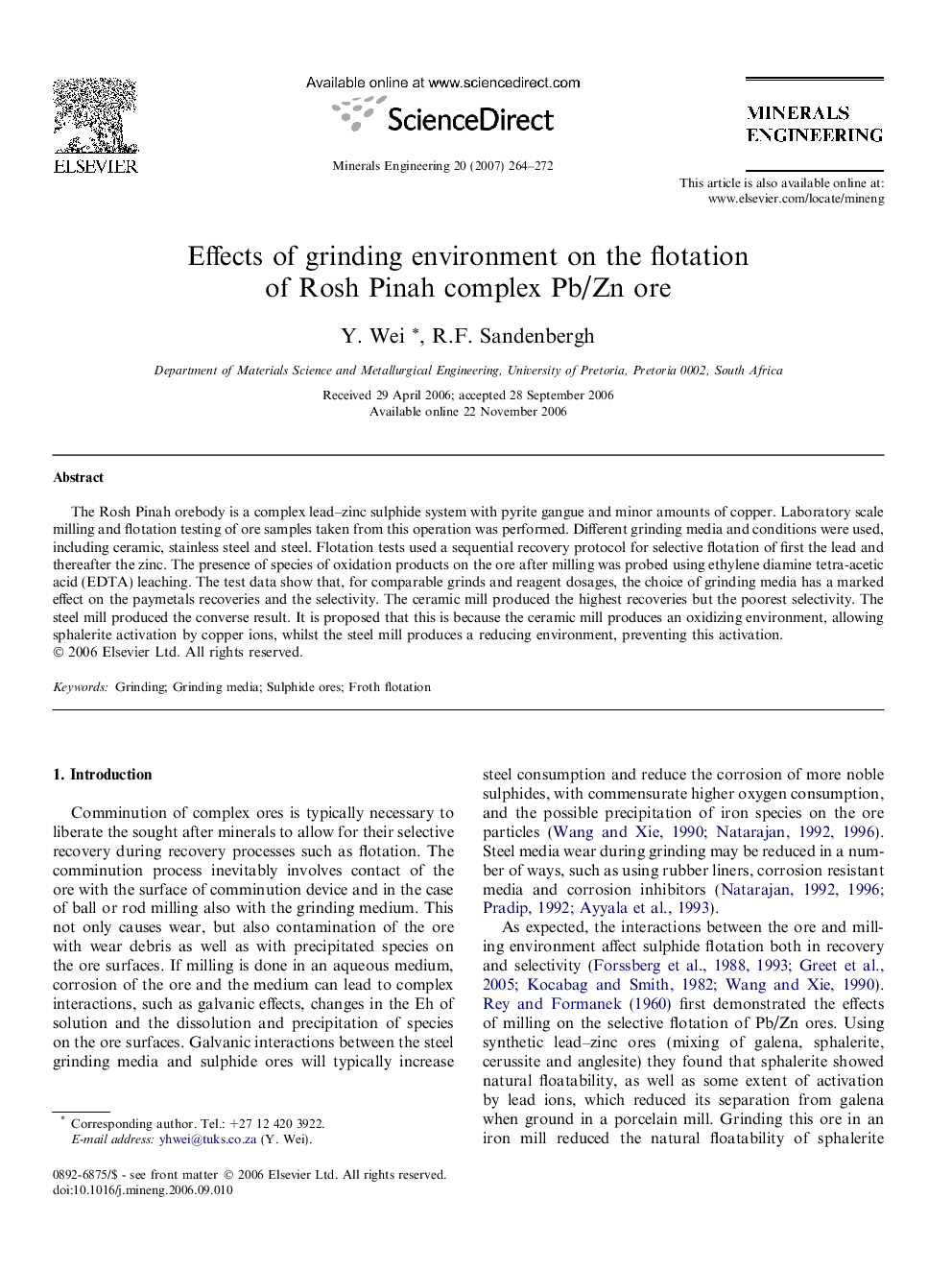| Article ID | Journal | Published Year | Pages | File Type |
|---|---|---|---|---|
| 234456 | Minerals Engineering | 2007 | 9 Pages |
The Rosh Pinah orebody is a complex lead–zinc sulphide system with pyrite gangue and minor amounts of copper. Laboratory scale milling and flotation testing of ore samples taken from this operation was performed. Different grinding media and conditions were used, including ceramic, stainless steel and steel. Flotation tests used a sequential recovery protocol for selective flotation of first the lead and thereafter the zinc. The presence of species of oxidation products on the ore after milling was probed using ethylene diamine tetra-acetic acid (EDTA) leaching. The test data show that, for comparable grinds and reagent dosages, the choice of grinding media has a marked effect on the paymetals recoveries and the selectivity. The ceramic mill produced the highest recoveries but the poorest selectivity. The steel mill produced the converse result. It is proposed that this is because the ceramic mill produces an oxidizing environment, allowing sphalerite activation by copper ions, whilst the steel mill produces a reducing environment, preventing this activation.
